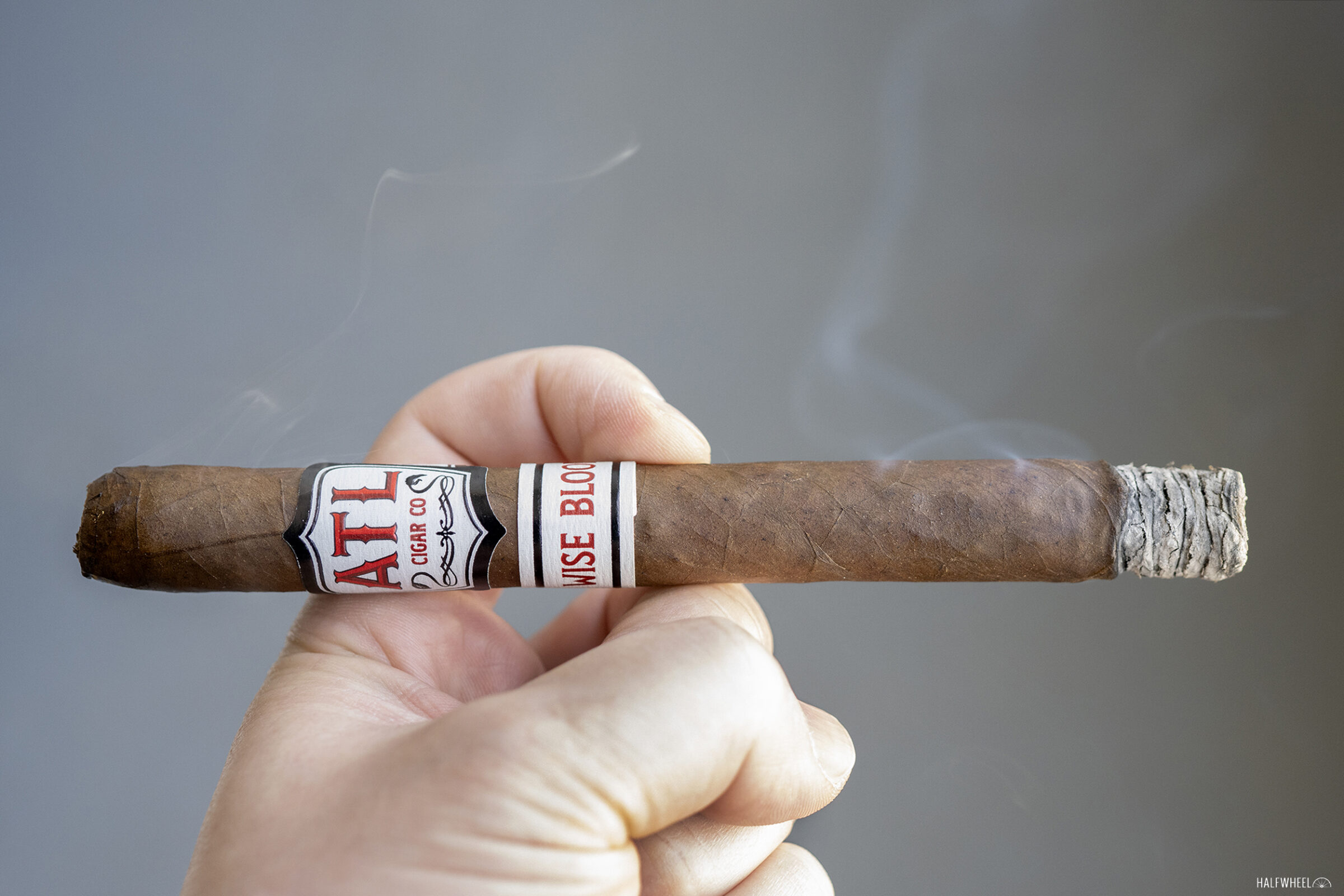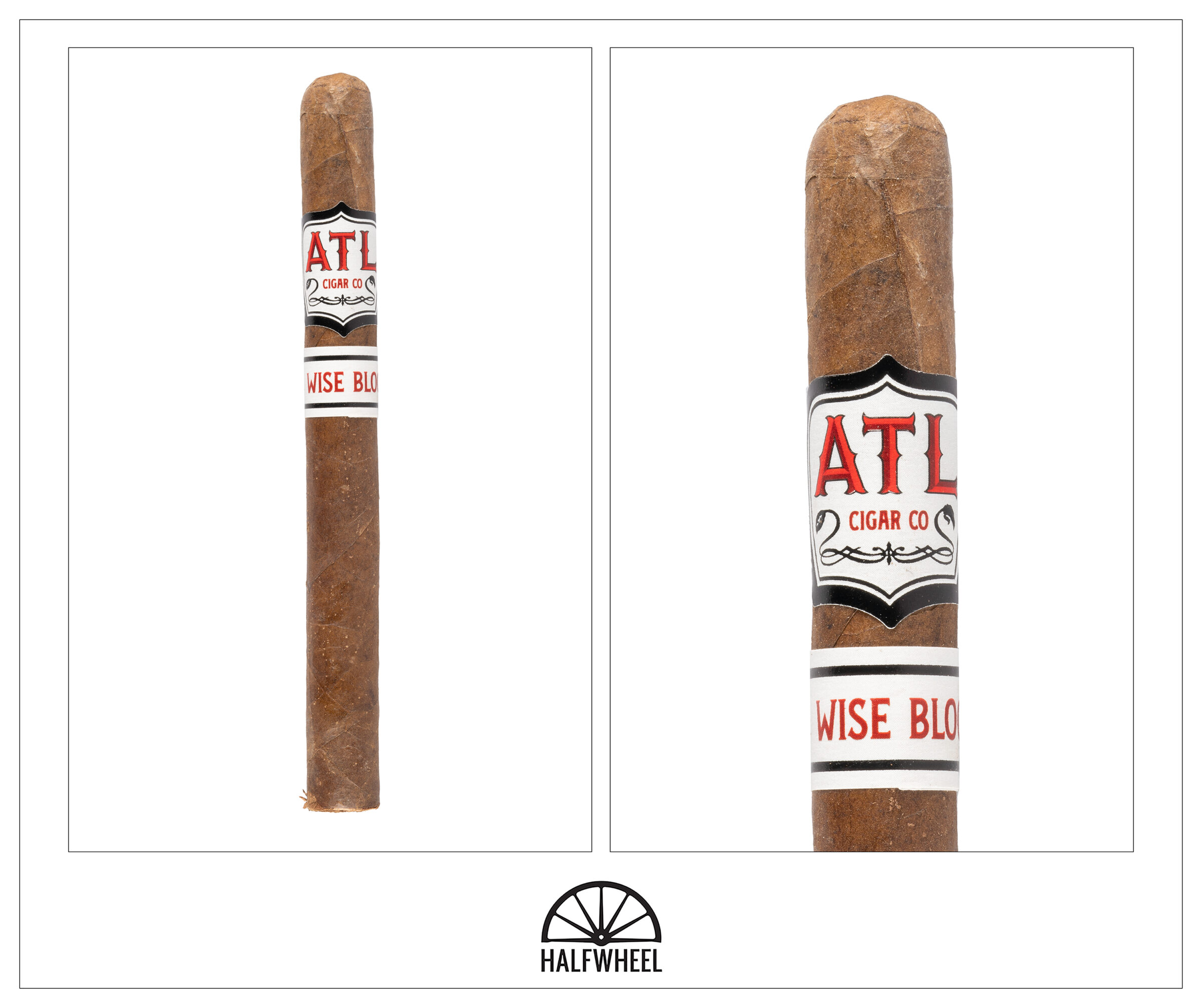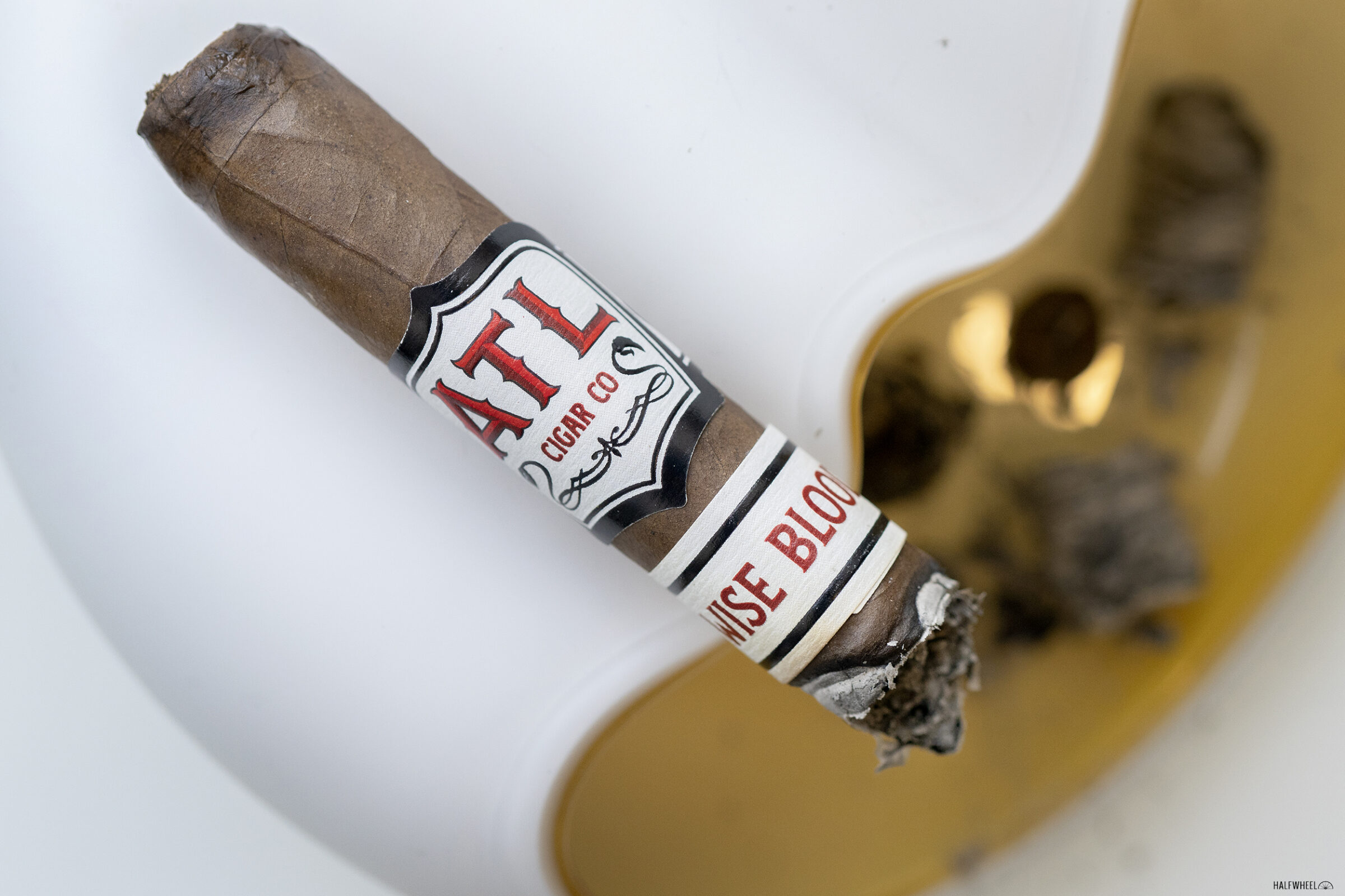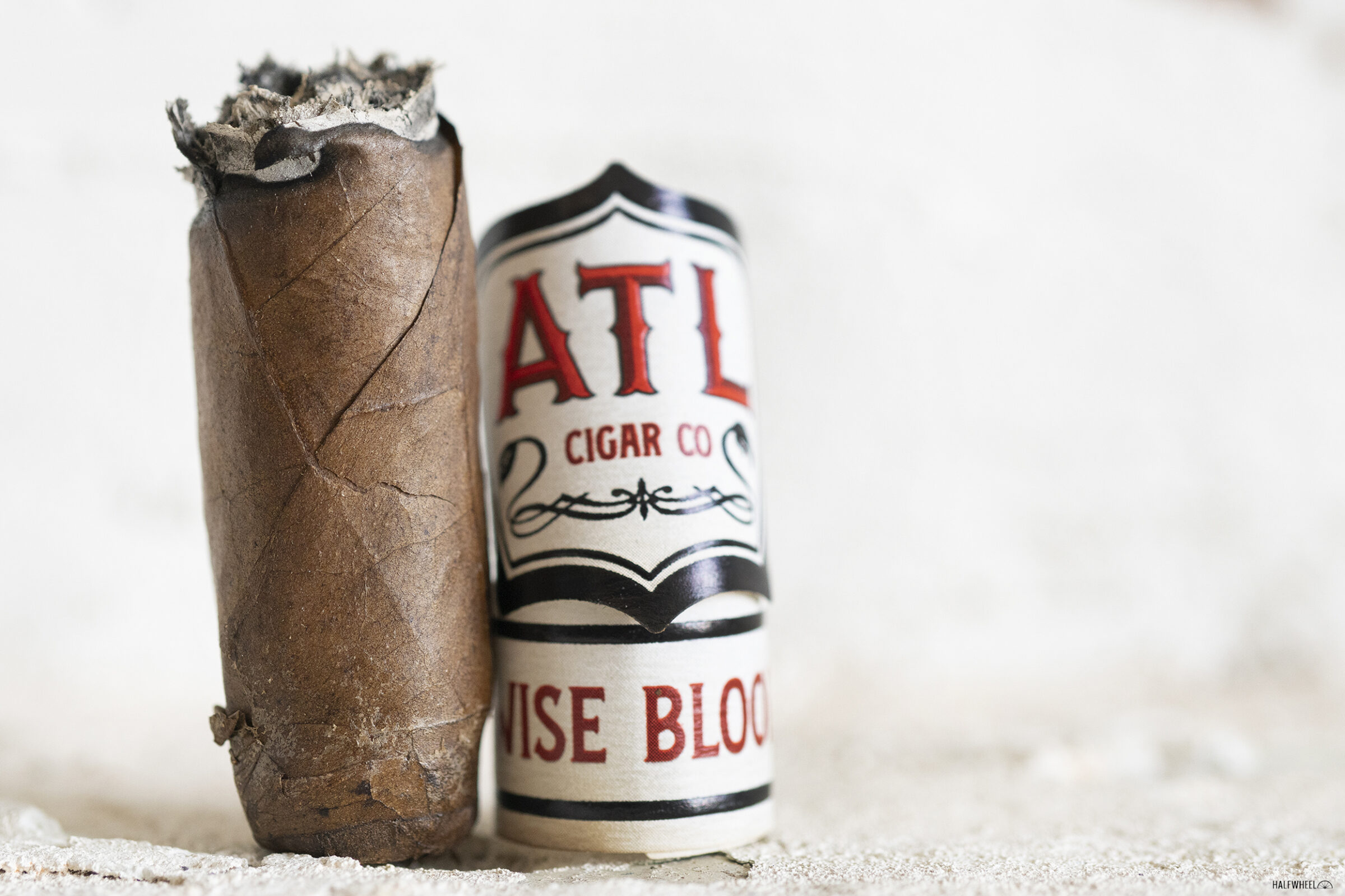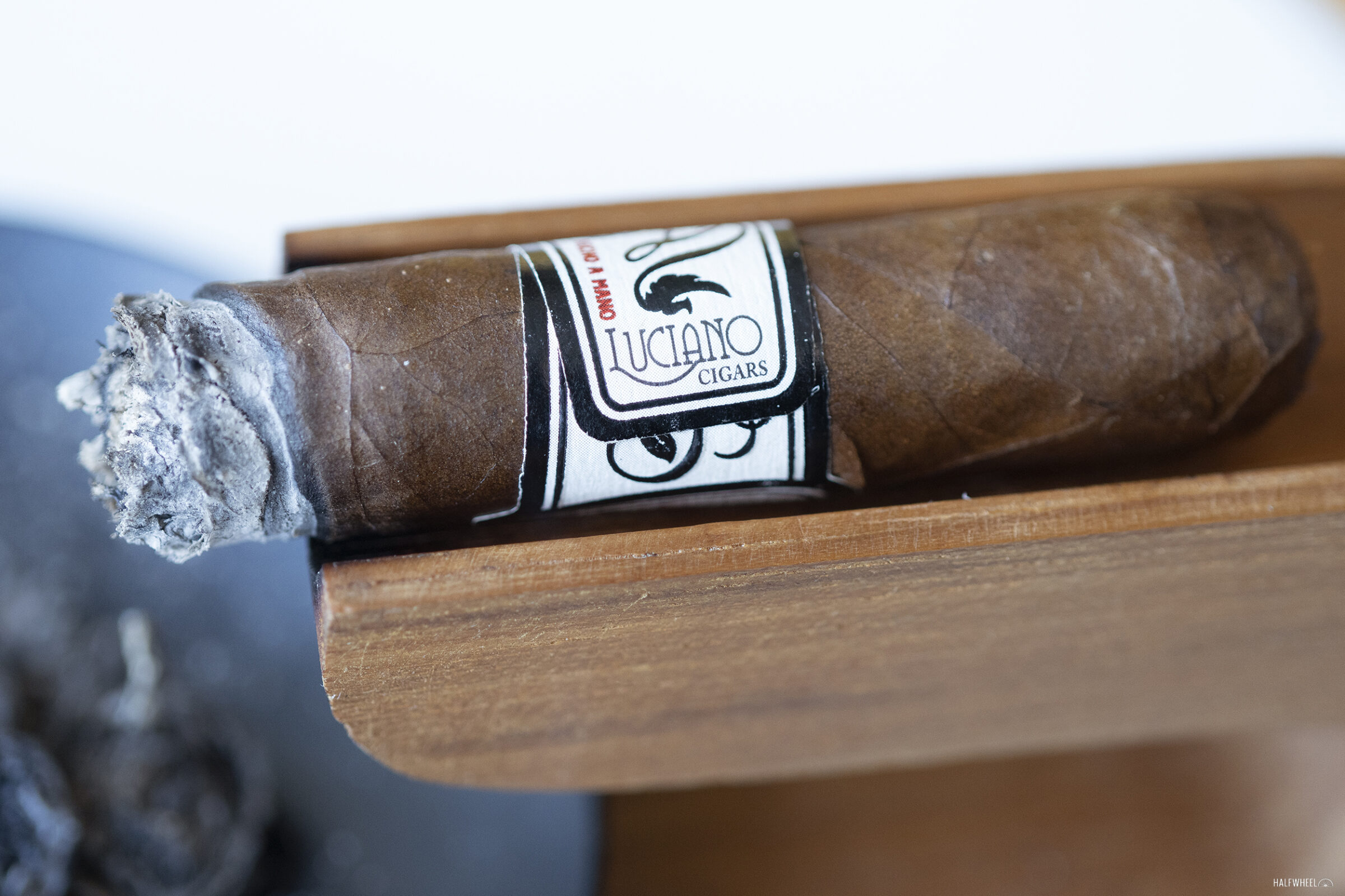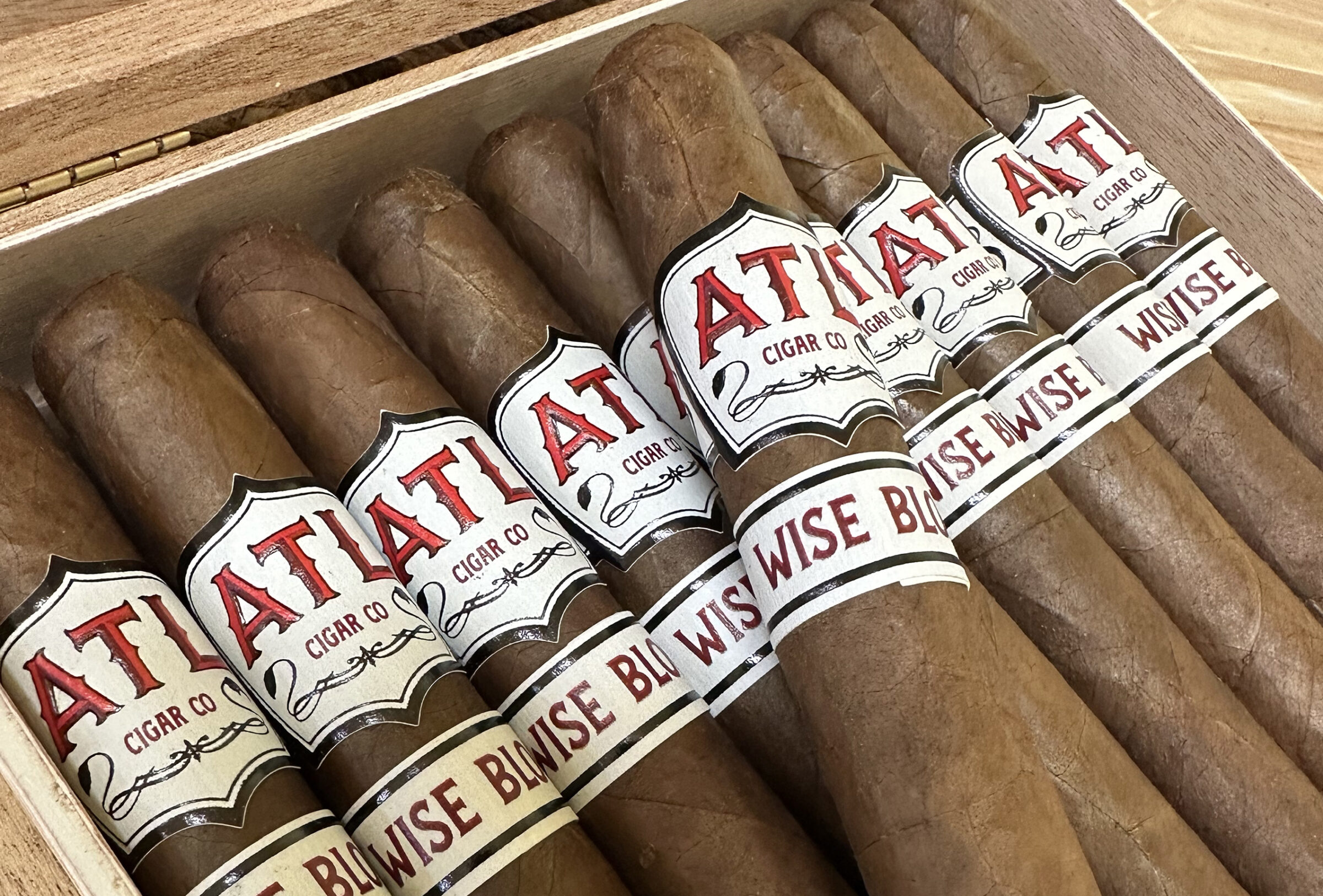At TPE 2023, ATL Cigar Co. debuted a new line that was inspired by the first novel of Flannery O’Connor, a Georgia native. “Wise Blood,” the book—which I have not read—is described on Wikipedia as about “a returning World War II veteran who, haunted by a life-long crisis of faith, resolves to form an anti-religious ministry in an eccentric, fictionalized Southern city after finding his family homestead abandoned without a trace.”
As for the cigar, ATL Cigar Co.’s Wise Blood is a new four-size line that uses an Ecuadorian habano rosado wrapper over an Ecuadorian Connecticut binder and fillers from Nicaragua. ATL Cigar Co. has a partnership with Luciano Cigars, which produces the line at its factory in Nicaragua and handles distribution for ATL.
It is offered in four sizes:
- ATL Cigar Co. Wise Blood Lonsdale (6 1/2 x 42) — $9.99 (Box of 20, $199.80)
- ATL Cigar Co. Wise Blood Robusto Extra (6 x 50) — $10.49 (Box of 20, $209.80)
- ATL Cigar Co. Wise Blood Robusto (5 1/4 x 54) — $10.49 (Box of 20, $209.80)
- ATL Cigar Co. Wise Blood Gordito (4 x 60) — $10.99 (Box of 20, $219.80)
“Flannery O’Connor and her Southern Gothic portfolio have had a profound influence on me,” said Leroy Lamar, president of ATL Cigar Co., via a press release. “Wise Blood, in particular, helps me wrestle with faith, race, my relationships with my co-founders, and frankly, my place in this world. We are proud to create a cigar that reflects these deep questions and commemorates such an important work and author.”
- Cigar Reviewed: ATL Wise Blood Lonsdale
- Country of Origin: Nicaragua
- Factory: Luciano Cigar Factory
- Wrapper: Ecuador (Habano Rosado)
- Binder: Ecuador (Connecticut)
- Filler: Nicaragua
- Length: 6 1/2 Inches
- Ring Gauge: 42
- Vitola: Lonsdale
- MSRP: $9.99 (Box of 20, $199.80)
- Release Date: April 2023
- Number of Cigars Released: Regular Production
- Number of Cigars Smoked For Review: 3
The first cigar I grab for this review immediately strikes me as rather light, which reminds me that when I weighed the cigars a couple of months ago, one of them was abnormally light, more on that below. Appearance-wise, the thing that stands out to me is that parts of the cigar have very thick veins, which oddly aren’t as prevalent on the other parts. The wrapper has a medium umber color and is devoid of most oils with some minor discoloration in the form of increased red colors. The aroma from the wrapper is medium-full with smells of dry egg noodles, ammonia, saltiness and some occasional pepper. On two cigars, the combination reminds me of the smell of human sweat, which isn’t a regular occurrence though not completely uncommon. The foot is full—one cigar is a tick under that mark—with sweet chocolate leading roasted meats, dry fall leaves and some red pepper. Two cigars feature draw that are slightly open for the ring gauge, while the third cigar has a tight draw. Flavor-wise, they are equally as all over the place. Two cigars have a distinct graham cracker flavor accented by a touch of cranberry and some earthiness; whereas the third cigar has some corn tortilla flavors leading oatmeal cookies, generic cereal and a chemical flavor that tastes a bit like the smell of baking powder paste. All three cigars are medium-full in intensity. Two cigars, coincidentally the two with open draws, see the top parts of the wrapper unravel upon cutting.
While the three cigars might have different cold draws, the first puffs are pretty consistent. Earthiness slightly edges out cedar with secondary flavors of tree bark, dry cocoa, generic woodiness and mineral flavors. Each cigar has a slightly different approach to the secondary flavors, but the overall takeaway is a pretty pedestrian, though smooth, start, right around medium-full. For most of the first third, it is earthiness accented by red pepper and woodiness. Terroir flavors—the mineral-laden varietal—ebb and flow in terms of their intensity, though as the cigar burns they become more frequent participants. Green pepper, white pepper and saltiness accent things throughout and one cigar has a lot of classic French bread flavors. Mineral flavors lead the way for two cigars, but a white pepper slowly and methodically builds until it takes over as the strongest flavor with some charred sensations underneath. The third cigar has lots of woody flavors—like lumber being cut—over mustard powder and citrus. Retrohales are quite different; sometimes, it’s cedar and oak accented by sweet fruity flavors, other times peanuts and sawdust, other times terroir flavors. Regardless of the flavors, they are quite intense and short. The finish introduces damp wood flavors and some wasabi-like pepper that lasts for a few seconds before teetering out. Flavor is between medium-full to full, body is medium-plus and strength is medium or medium-plus. The two cigars with open draws need multiple touch-ups to help with combustion, the third cigar—which has a tighter draw—is burning well and doesn’t need any help from the lighter.
There’s a very clear sign that the second third has begun: an uptick in creaminess. For the first two cigars, that means creaminess and nuttiness are now leading the profile, edging out bitter herbal flavors, peanut shells, earthiness and white pepper. The initial few seconds are quite enjoyable, but as time goes on, the profile gets a lot drier as pasta, chocolate and mineral flavors enter the fray. The third cigar is completely different: an overly saturated profile is led by cedar, edging out earthiness and mineral flavors with saltiness, white pepper and sweetness in the background. I don’t find much difference between when the smoke is in my mouth and after. I think this is due to how rapidly the flavor develops as the smoke is still in my mouth, meaning the initial flavor is pretty short and the finish starts quite early compared to most cigars. I find a general uptick in mineral flavors along with specific changes: one cigar has a pronounced oak flavor during the finish, the final cigar’s finish is slightly less concentrated compared to the main flavor. The retrohales vary wildly from cigar to cigar. On the first cigar, it’s a lot less intense than it was in the first third with mild sweet cracker flavors, grassiness and a potato starch sensation. It’s quite fragrant and hits the palate in different places. The retrohale on the second is dominated by cedar with leather and creaminess as secondary flavors and sunflower seeds, harshness and generic fruitiness in the background. The third cigar features roasted woods, burnt coffee, leather and toastiness—close to the same level of intensity—with some wasabi sharpness as an accent. Flavor is medium-plus to medium-full, body is medium-plus and strength is medium-plus. I suspect that the variance in flavors is partially related to the differences in construction. The first cigar I smoke goes out and needs a full relight, the second cigar, which also has an open draw, avoids a full relight but needs some help from the lighter. On the other hand, the third cigar has a tighter draw, avoids construction issues and delivers a fuller flavor profile.
Similar to the second third, the final thirds of the three ATL Wise Blood Lonsdales I smoke are quite different. The cigar that required a relight is a study in contrast. There’s some interesting grainy, mineral and yellow mustard flavors, but they are intertwined with the burnt flavors I often taste once a cigar has gone out and been relit. The final cigar, the one with the tight draw, has a profile dominated by burning woods over milder nuttiness, a touch of metallic sensations and burnt black pepper. The second cigar is not entirely in between those two, it has a cedar-forward profile with terroir flavors. What’s far more interesting is the retrohale. Blowing smoke through my nostrils delivers a quick burst of melon sweetness, straw, leather and earthiness on the finish of the first and second cigars. The third cigar presents the sweetness more like grapefruit and floral sensations, followed by sawdust, earthiness, white pepper and a touch of leather. Each time, I find a hearty woodiness left over in the rertrohale’s wake. That is each time except when I take consecutive retrohales and then it turns into a sharp and bitter mineral-forward profile. Flavor is medium-full, body is close to full and strength is generally medium-plus. One cigar needs another relight, another needs touch-ups and the final cigar avoids any assistance from the lighter.
Final Notes
- The three cigars I smoked weighed 9.24g, 11.46g and 10.76g. It is pretty rare for anything other than the smallest vitolas to weigh less than 10g. Of the last 100 cigars I’ve weighed—all different shapes and sizes—only three have weighed less than 10g. That said, it does happen with some lonsdales and lanceros.
- If I had to guess, that 9.24g cigar was the first cigar I smoked, the one that required full relights. For a cigar that went out multiple times, it tasted decent.
- I found it very difficult to tear off these bands. I’m not sure if it’s related to the glue or the paper itself, but even using a knife was a struggle. For what it’s worth, the paper is on the thicker side but not the thickest paper I’ve seen on a cigar, it does feel abnormally stiff.
- Speaking of the bands, they have a QR code that goes to https://shop.atlcigar.co/events, though that URL currently appears to be broken.
- The bands also have the Luciano Cigars logo on the back, which I find to be interesting. There aren’t many cigars that have multiple companies’ logos on them—for example, Arturo Fuente’s logo is not found on the Ashton VSG—and I think there are pros and cons to doing it. I wonder how many people will smoke this and think it’s a Luciano Cigars product and not just made at the company’s factory. ATL Cigars said it began using the logo on its bands beginning late last year.
- While I had issues with keeping the cigar lit, the burn line is very impressive.
- The final cigar’s draw was much tighter than the other two. It smoked closer to a lancero; there wasn’t much smoke coming from the top of the cigar until I took a puff and then it all came out.
- Cigars for this review were purchased by halfwheel.
- Final smoking time is two hours and 10 minutes on average.
I have not smoked much from the ATL Cigar Co. portfolio and my thoughts remain pretty neutral going forward. On one hand, the three cigars were rarely worse than fine and it's a cigar I'd smoke again, though not one I'd go out of my way to purchase. On the other hand, construction could have been better and it's a $10 cigar. If all three cigars had tasted like the final Wise Blood Lonsdale I smoked, I think I'd have a different take as that cigar was better than the other two. And that highlights my largest issue: the three cigars I smoked were rather different. While $10 is no longer the price ceiling it once was, it's still a number that I'd expect to find general consistency at. Given my limited experiences here, I feel pretty good that you'll get a decent experience smoking an ATL Wise Blood Lonsdale, but I'm not confident you'll get a repeatable one.

